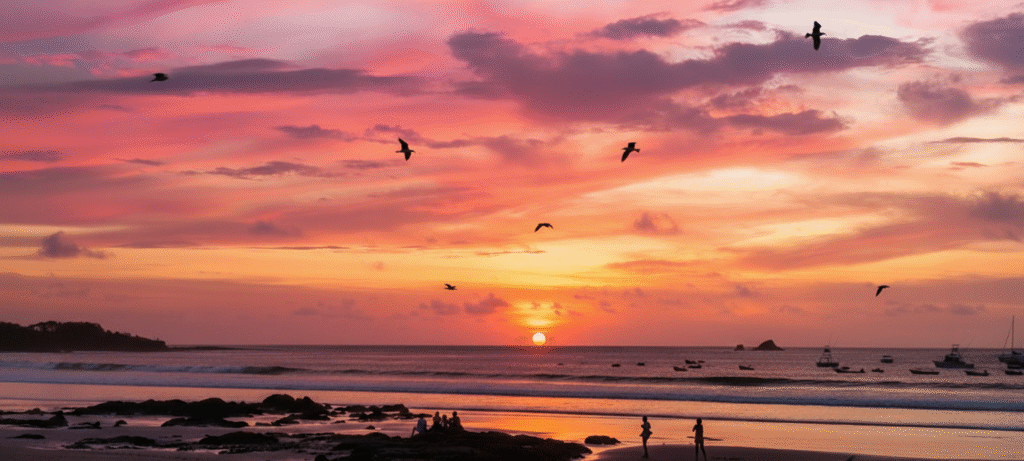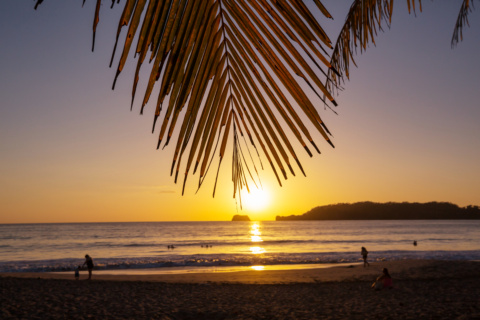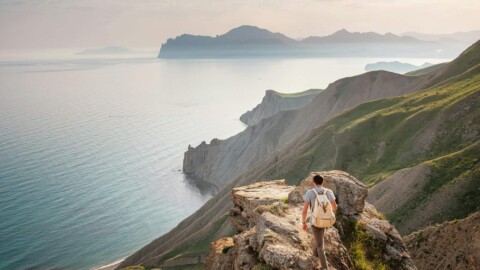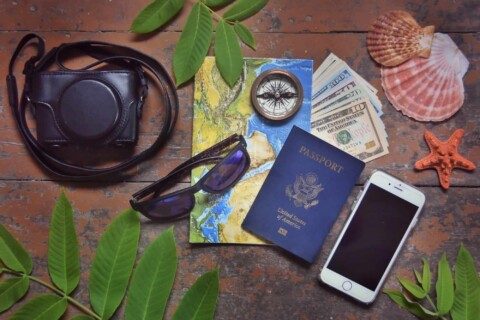There’s something magical about spontaneous afternoon trips when you’re traveling. No rigid itinerary, no pressure to see everything—just the freedom to wander and discover. That’s exactly what drew me to Tamarindo, Costa Rica, on a perfect Thursday afternoon. Staying with my sister and her husband just outside Brasilito, we decided to escape to this beloved beach town for a few hours of exploration, and what unfolded was an experience that captured the essence of pura vida in its purest form.
The Journey to Tamarindo
The drive from Brasilito to Tamarindo takes a little over 30 minutes along the coastal roads that wind through Guanacaste Province. This northwestern region of Costa Rica has become a haven for expats, surfers, and travelers seeking that perfect blend of pristine beaches, laid-back atmosphere, and just enough infrastructure to feel comfortable without losing its authentic charm. My sister and her husband have called Costa Rica home for about a decade now, and their deep roots in the community would soon become apparent as we ventured into town.
As we approached Tamarindo, the energy shifted. This isn’t a sleepy fishing village anymore, but it hasn’t quite transformed into an over-commercialized tourist trap either. It exists in that sweet spot—a growing destination that still retains its personality, where locals and visitors mingle naturally, and where you can still find authentic experiences alongside modern conveniences.
Golden Hour at Tamarindo Beach
Our first stop was inevitable: the beach. Tamarindo Beach stretches in a graceful crescent along the Pacific coast, its golden sand meeting turquoise waters in an endless dance of waves and foam. We arrived with perfect timing—the late afternoon sun was beginning its descent, painting the sky in those preliminary shades of orange and pink that promise a spectacular sunset.
With a few cold Imperial beers in hand—Costa Rica’s beloved national brew—we found our spot on the sand and settled in for the show. There’s something deeply satisfying about that first sip of a cold beer on a warm beach, the condensation on the bottle mixing with salt air, the taste somehow enhanced by the setting sun and the sound of crashing waves.
The temperature hovered around 30 degrees Celsius, that perfect tropical warmth that makes you grateful for the ocean breeze without ever feeling uncomfortable. The weather was, in a word, flawless. This is what draws people to Costa Rica’s Pacific coast—the dry season brings these impossibly beautiful days where everything seems to align in perfect harmony.
As the sun continued its descent, the beach came alive with activity. Tamarindo attracts a wonderfully diverse crowd, and the sunset hour brings everyone out. Couples walked hand-in-hand along the water’s edge, their footprints disappearing with each incoming wave. Families played in the surf, children’s laughter mixing with the rhythmic sound of the ocean. Surfers paddled out for one last session, their silhouettes growing darker against the increasingly colorful sky.
What struck me most were the people on horseback. Several riders slowly made their way along the beach, their horses’ hooves splashing through shallow water, adding a timeless quality to the scene. It could have been a postcard from any era—horses on a beach at sunset, that universal image of freedom and natural beauty. As a photographer, I couldn’t have asked for a more perfect subject.
My goal for this trip was simple: relax and capture the sunset through my lens. There’s something meditative about sunset photography. You can’t rush it, can’t force it to be something it’s not. You simply have to be present, camera ready, waiting for those fleeting moments when the light hits just right. The sun seemed to pause at the horizon, as if reluctant to leave such a beautiful scene, before slowly melting into the Pacific in a final burst of crimson and gold.
The sky transformed through every shade imaginable—from brilliant oranges to deep purples, from soft pinks to rich magentas. Clouds caught the light and became works of art themselves. I clicked away, knowing that no photograph could truly capture what it felt like to be there, but trying nonetheless. That’s the photographer’s eternal quest—to bottle a moment, to preserve a feeling, to share what moved you with others who weren’t fortunate enough to witness it firsthand.
Discovering Downtown Tamarindo
As the last light faded from the sky and the beach crowd began to disperse, my sister and her husband took on the role of tour guides, leading me into the heart of Tamarindo’s downtown area. The town transitions beautifully from day to night, with string lights illuminating the streets and warm light spilling from shop windows and restaurants.
Walking through Tamarindo’s main streets felt like exploring a beach town that’s still figuring out what it wants to be when it grows up. There’s evidence of development everywhere—new restaurants, modern shops, upscale boutiques—but it’s all balanced with older establishments, local businesses, and that unmistakable Costa Rican casualness that prevents things from feeling too polished or pretentious.
The shops were charming, each one reflecting the eclectic nature of the town. Surf shops displayed colorful boards and beachwear, their doors wide open to the street. Artisan boutiques showcased local crafts, from hand-painted ceramics to woven bags made from natural fibers. Jewelry stores featured pieces inspired by the ocean—silver waves, turtle pendants, coral-shaped earrings. Everything felt authentically coastal, created by and for people who love this lifestyle.
What became immediately apparent was that my sister and her husband were familiar faces here. Ten years of living in Costa Rica had woven them into the social fabric of the community. Shopkeepers greeted them by name, stopped to chat, asked about mutual friends. This is one of the beautiful things about expat life in smaller communities—you become part of something, not just a permanent tourist but an actual member of the neighborhood.
The people we encountered embodied that famous Costa Rican warmth—”pura vida” isn’t just a saying, it’s a genuine approach to life. Strangers smiled, vendors were patient and friendly, and there was none of that aggressive salesmanship you sometimes encounter in tourist areas. Everyone seemed genuinely happy to be there, to share their town with visitors, to go about their daily lives in this paradise by the sea.
Thursday Night at the Vendors Market
As darkness settled over Tamarindo, we made our way to the highlight of our evening: the Thursday night vendors market. This weekly gathering has become an institution in Tamarindo, a place where artisans, food vendors, and craftspeople converge to offer their wares to both locals and tourists.
The market wasn’t as crowded as it might be during high season, and my sister explained that we were at the beginning of the low season—that magical time when prices drop slightly, beaches are less packed, and you can actually have a conversation with vendors without shouting over the crowd. For me, this was perfect. The relaxed atmosphere made it easy to move around, to really examine the items for sale, to appreciate the craftsmanship and care that went into each product.
The variety was impressive. Jewelry vendors displayed their creations under battery-powered lights—silver rings set with local stones, beaded bracelets in every color imaginable, leather necklaces with handcrafted pendants. Each piece told a story, reflected the maker’s style, connected to the natural beauty of Costa Rica in some way.
Food stalls sent aromatic clouds drifting through the warm evening air. The scents mingled and intertwined—grilling meat, fresh herbs, baking bread, tropical fruits, exotic spices. Vendors offered everything from traditional Costa Rican dishes to international fusion cuisine. Baked goods were piled high—empanadas, pastries, breads, cookies. The homemade quality of everything was evident; these weren’t mass-produced items but labor-intensive creations made with pride and skill.
We wandered slowly, taking it all in, stopping occasionally to admire something particularly beautiful or interesting. The low-key nature of the evening meant vendors had time to chat, to explain their process, to share the story behind their products. This personal connection transforms shopping from a transaction into an experience, from acquiring something to understanding where it came from and who made it.
A French Connection
One vendor in particular caught our attention—a bakery stall laden with both sweet and savory items that looked absolutely irresistible. Golden croissants sat beside flaky empanadas, dense artisan breads shared space with delicate pastries. The display was mouth-watering, but what really surprised me was when the owner greeted us and I realized he was speaking French.
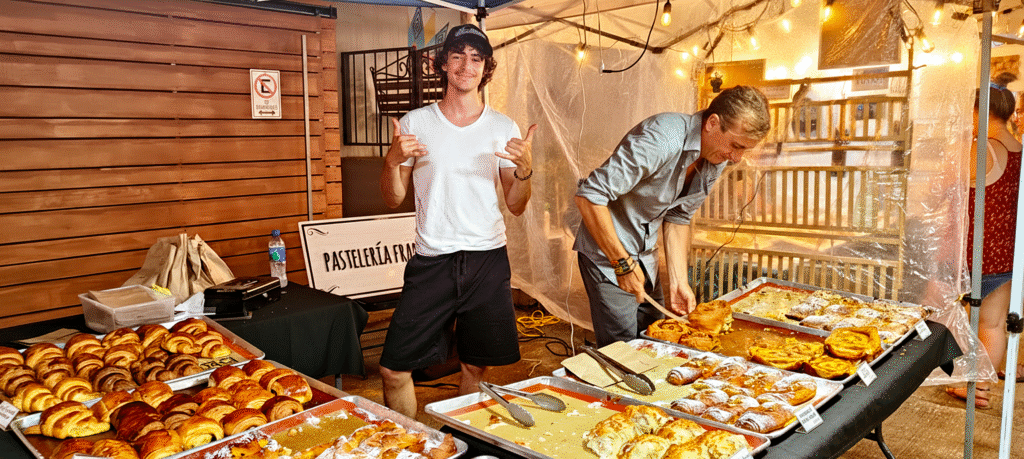
As a French speaker myself, I immediately switched languages, and his face lit up with delight. There’s something special about unexpectedly encountering your native language in a foreign country—an instant connection, a bridge across cultures, a reminder that the world is both vast and surprisingly small.
We conversed easily in French as I pointed out various items that caught my eye. I selected several pieces—some sweet treats for dessert, some savory items for later meals. Each one was made with obvious care and skill, the kind of quality you only get from someone who truly loves their craft. The owner mentioned that he also owned a restaurant somewhere in Tamarindo, though he didn’t specify which one. It felt like an invitation for a future visit, a reason to return and explore more of what this talented chef had to offer.
This brief encounter encapsulated something essential about Tamarindo: it’s becoming increasingly international while maintaining its Costa Rican soul. French bakers, American surfers, European artists, Canadian retirees—they’ve all found their way here, drawn by the beauty and the lifestyle, contributing their own flavors to the local culture without overwhelming it.
Reflections on Growth and Change
As we walked back to the car, my mind wandered to bigger questions about Tamarindo’s future. It’s impossible to spend time in a place like this without thinking about development, growth, and that loaded word: gentrification.
Tamarindo is clearly at a crossroads. It’s growing, and that growth is visible everywhere—new construction, rising property values, increased tourist infrastructure. I can see a bright future for this town, real potential for it to become a major destination on Costa Rica’s Pacific coast. The bones are all there: stunning beaches, great surf, excellent weather, friendly people, and a relaxed atmosphere that people crave in our increasingly hectic world.
But growth comes with risks. I’ve seen too many beautiful places lose their soul in the rush to develop, to capitalize, to maximize every square inch of real estate. Tamarindo still has its charm, its authenticity, its ability to make you feel like you’re discovering something special rather than visiting a carefully curated tourist attraction.
My hope is that this balance can be maintained. Costa Rica as a whole needs to continue upgrading its infrastructure, creating opportunities, and welcoming the economic benefits that tourism brings. But it needs to be careful not to do this in a rush manner, not to sacrifice what makes these places special in the pursuit of short-term gains.
The gentrification question is complex. Yes, rising prices can push out locals. Yes, catering exclusively to tourists can hollow out a community’s authentic character. But development also brings jobs, improved services, better roads, and opportunities that might not otherwise exist. The key is finding that elusive middle ground—welcoming growth while protecting identity, encouraging investment while preserving community, building for the future while honoring the past.
Tamarindo will inevitably change. The question is whether that change will be thoughtful and sustainable or haphazard and extractive. Based on what I saw during my afternoon visit, there’s reason for optimism. The locals seem engaged, the expat community appears invested in the town’s wellbeing, and there’s a genuine appreciation for what makes this place special.
The Digital Nomad Reality
We returned to my sister’s place outside Brasilito as the night deepened, and I did what I’ve been doing throughout this trip: I went back to work. I was in Costa Rica to visit family, yes, but I was also there to work remotely, living that digital nomad lifestyle that’s becoming increasingly common in places like this.
Costa Rica has positioned itself brilliantly for remote workers. Reliable internet, comfortable accommodations, a reasonable time zone for both American and European business hours, and an environment that makes you feel like you’re on vacation even while you’re working—it’s an attractive package.
Sitting at my laptop with the warm Costa Rican night air drifting through the windows, I reflected on how strange and wonderful modern work can be. A few hours earlier, I’d been photographing a sunset on a tropical beach. Now I was back to emails and projects, but somehow it didn’t feel like a harsh transition. The relaxation and inspiration from the afternoon seemed to carry over, making the work feel less like a burden and more like just another part of a well-rounded day.
This is the promise of remote work: not that you’re always on vacation, but that you can weave work and life together in a more balanced way. You can take an afternoon to explore Tamarindo, to watch the sunset with an Imperial beer in hand, to wander through a night market and chat with a French baker—and then you can sit down and be productive, energized rather than drained by your experiences.
Until We Meet Again
As I type these final words, I’m already planning my return to Tamarindo. One afternoon wasn’t nearly enough to discover everything this town has to offer. I didn’t try that French chef’s restaurant. I didn’t explore the side streets and hidden corners. I didn’t surf the legendary breaks or venture out to nearby beaches. I didn’t sample enough of the local cuisine or meet enough of the characters who make this place what it is.
But that’s okay. Some places are meant to be visited once, checked off a list, and moved on from. Tamarindo isn’t one of those places. It’s somewhere you return to, somewhere that reveals itself slowly, somewhere that feels a little bit like home even if you’re just passing through.
The sunset will be there waiting. The beach will continue to attract its beautiful mixture of locals, tourists, and horses. The Thursday night market will set up week after week, vendors displaying their crafts and baked goods. The town will keep evolving, hopefully finding that balance between growth and authenticity, between welcoming the world and maintaining its soul.
And I’ll be back. Maybe next time I’ll stay longer, explore more deeply, discover new corners and hidden gems. Maybe I’ll finally learn to surf, joining those silhouettes paddling out at sunset. Maybe I’ll track down that French restaurant and finally put a name to the talented baker I met at the market.
For now, I have my memories and my photographs—imperfect attempts to capture perfect moments. I have the taste of Imperial beer mixed with salt air, the feeling of warm sand under my feet, the sound of waves and laughter and horses’ hooves. I have the image of that sunset seared into my memory, nature’s nightly masterpiece performed for anyone willing to pause and watch.
Tamarindo, Costa Rica—I’ll be back. That’s not just a promise, it’s an inevitability. Some places grab hold of you and don’t let go, and this is definitely one of them. Until next time, pura vida.



